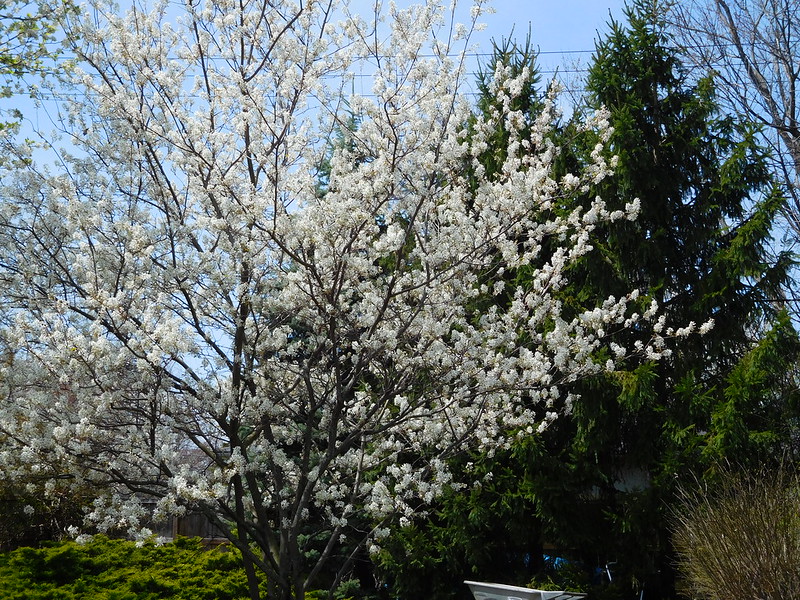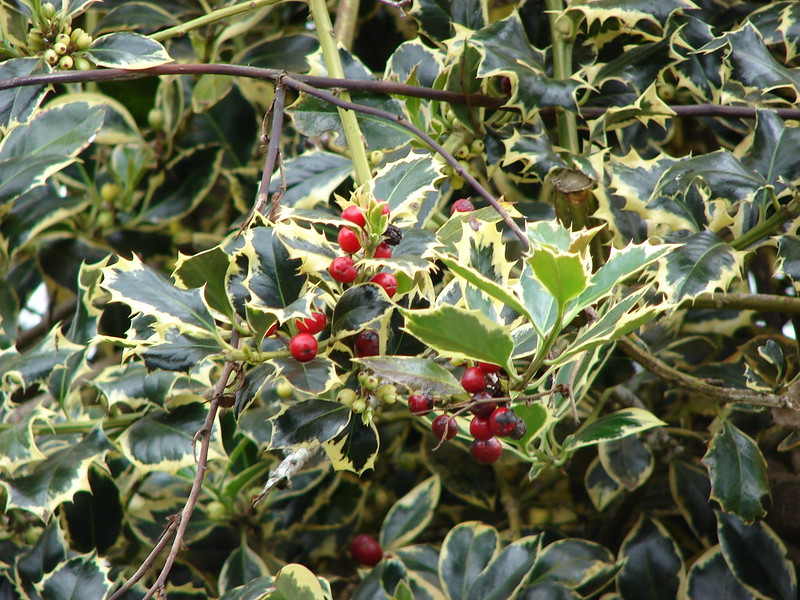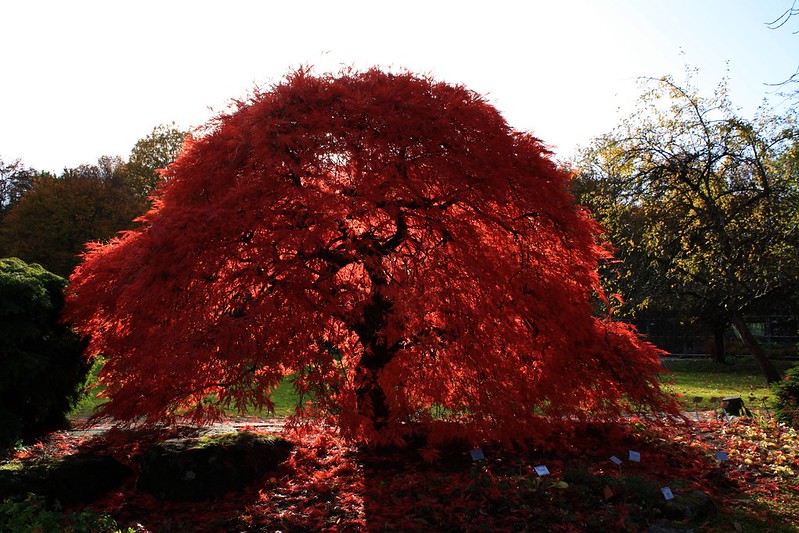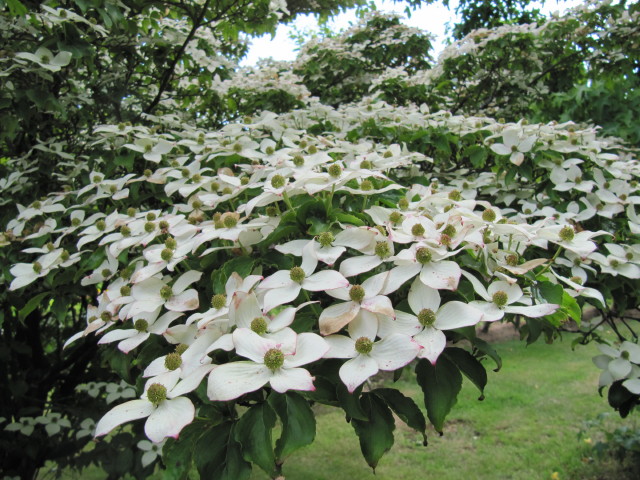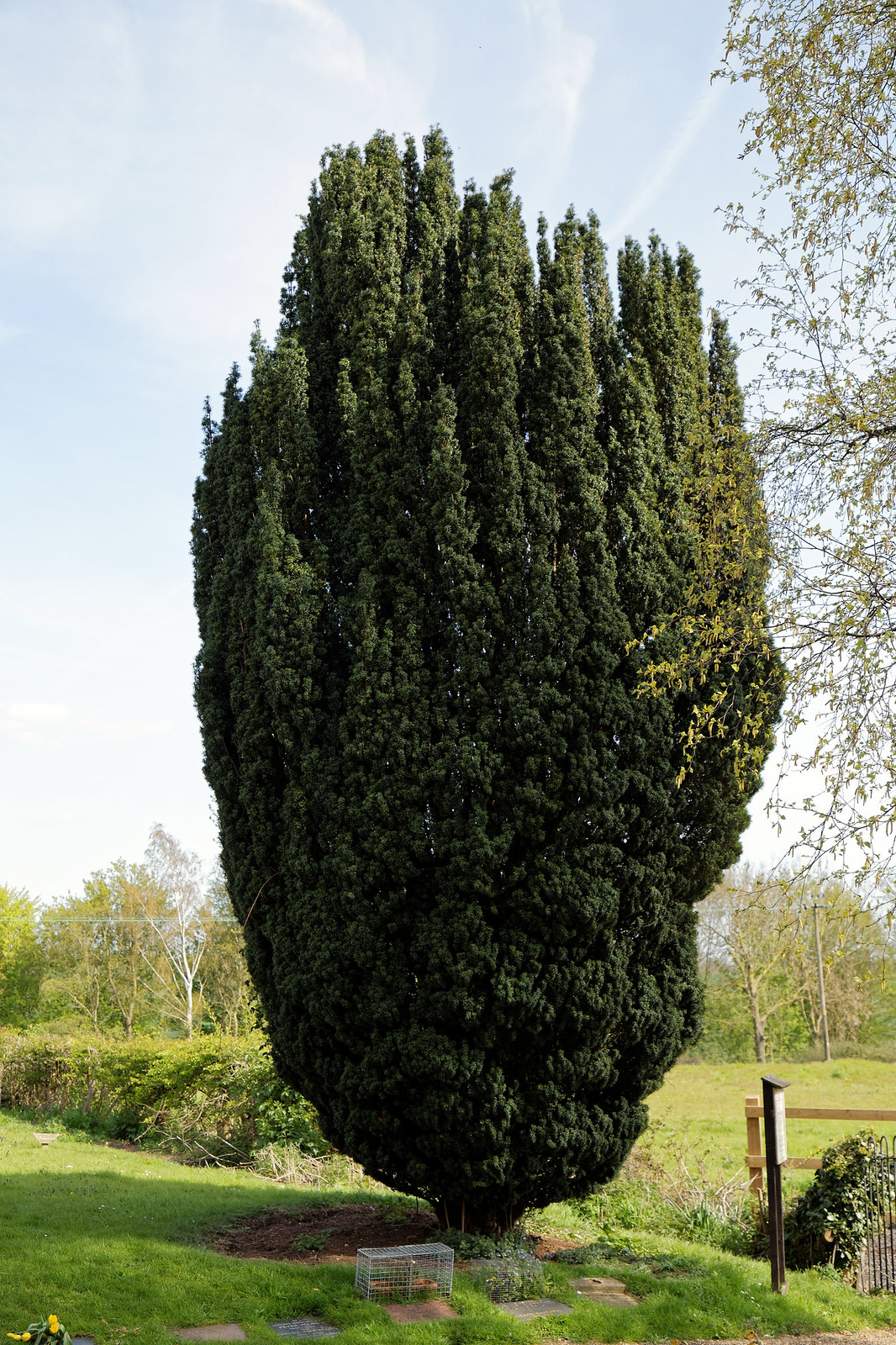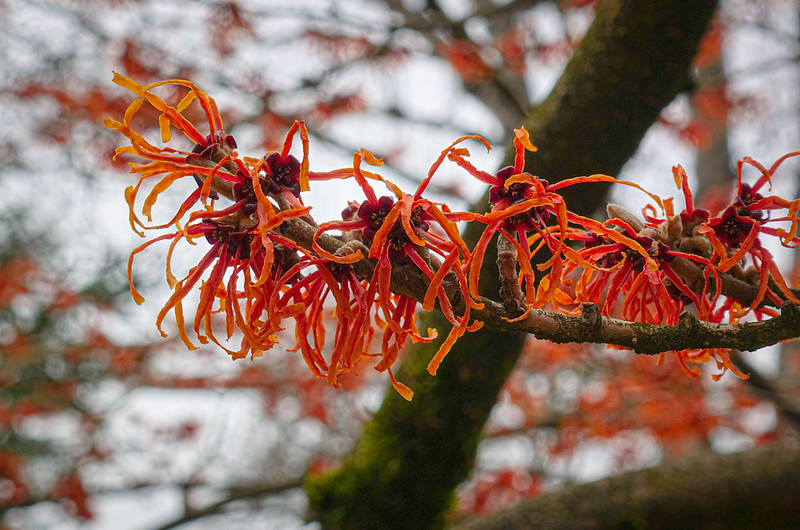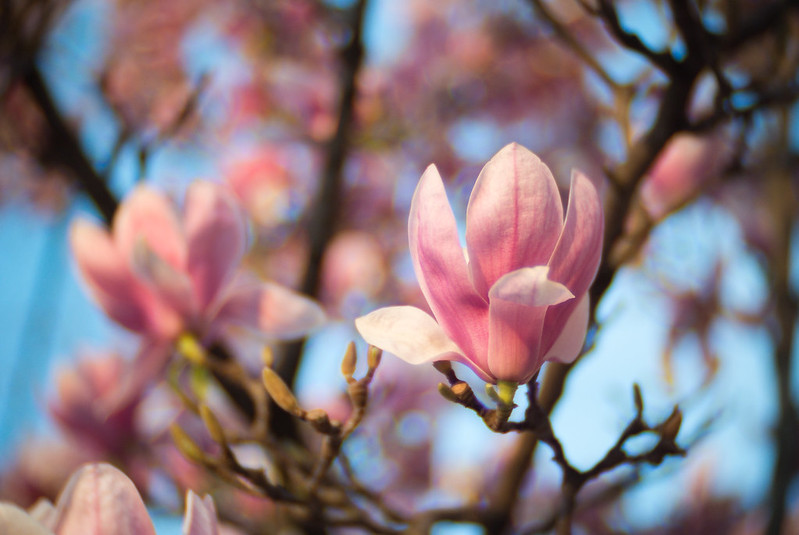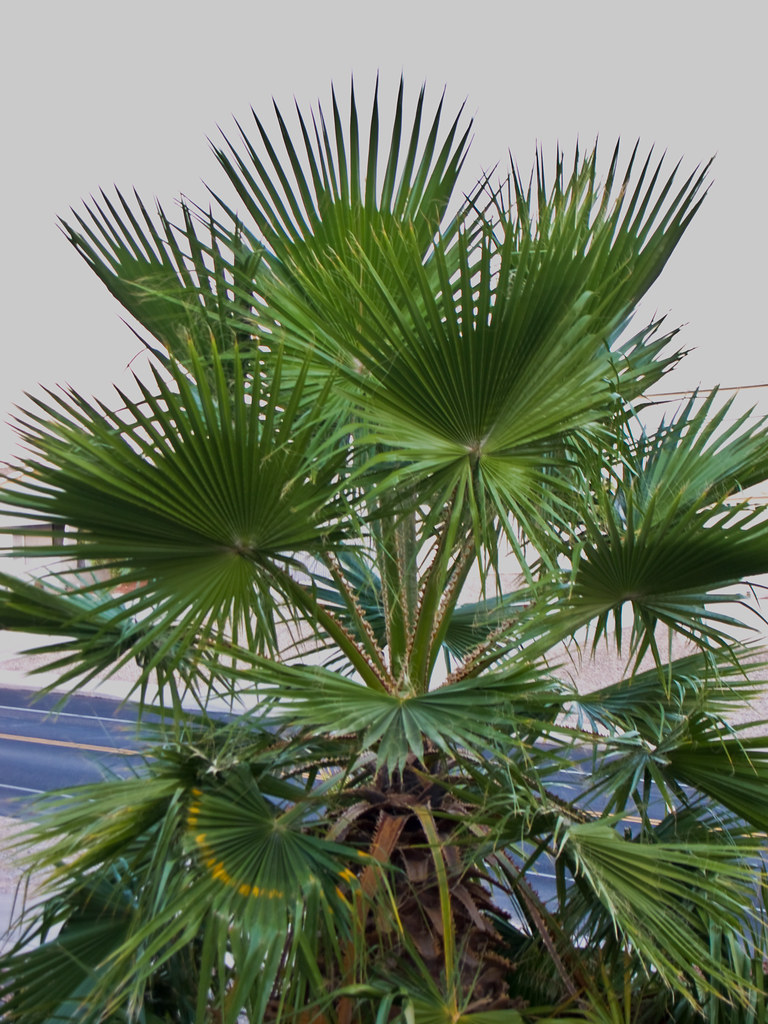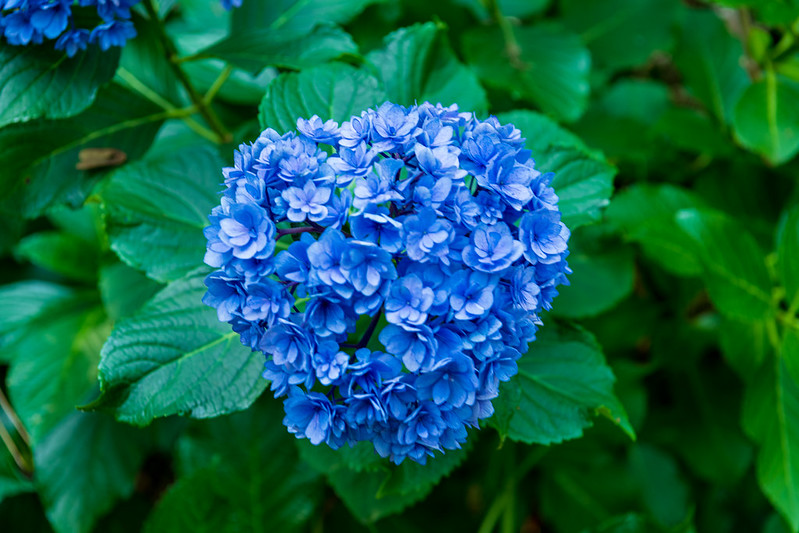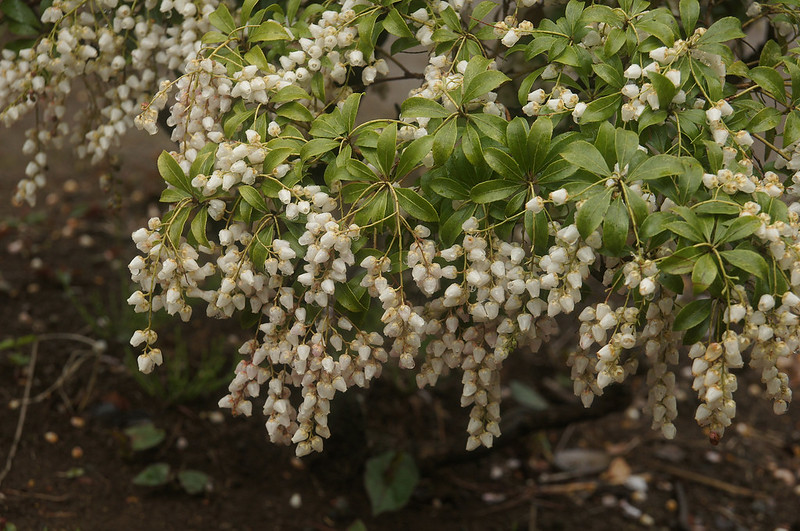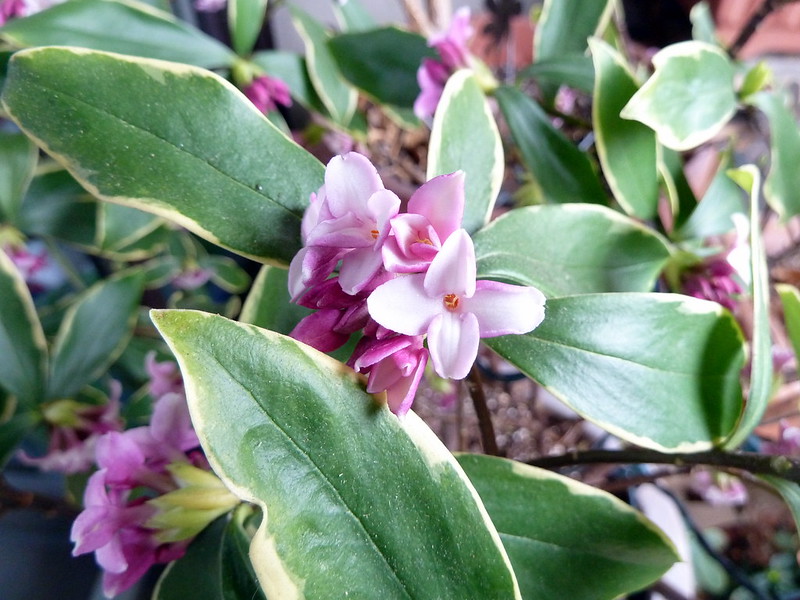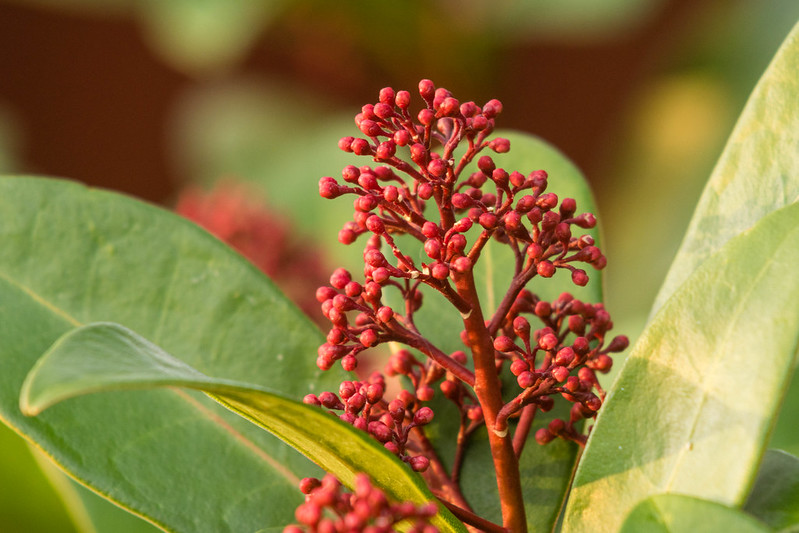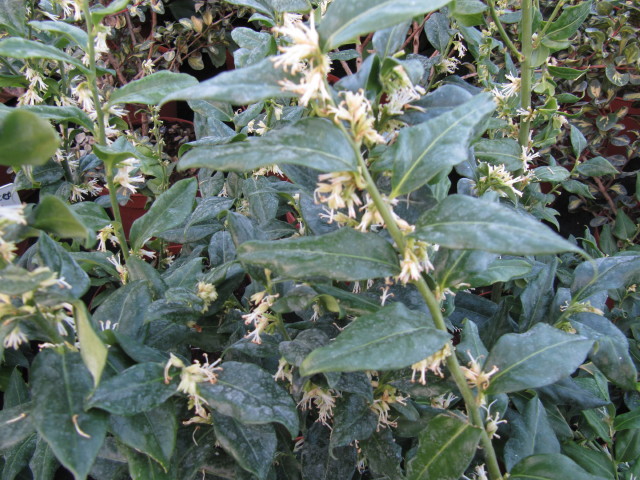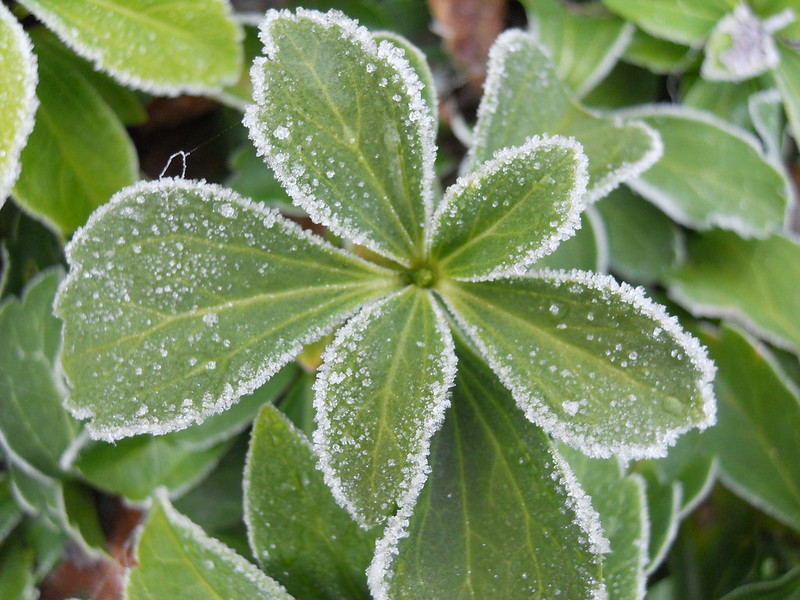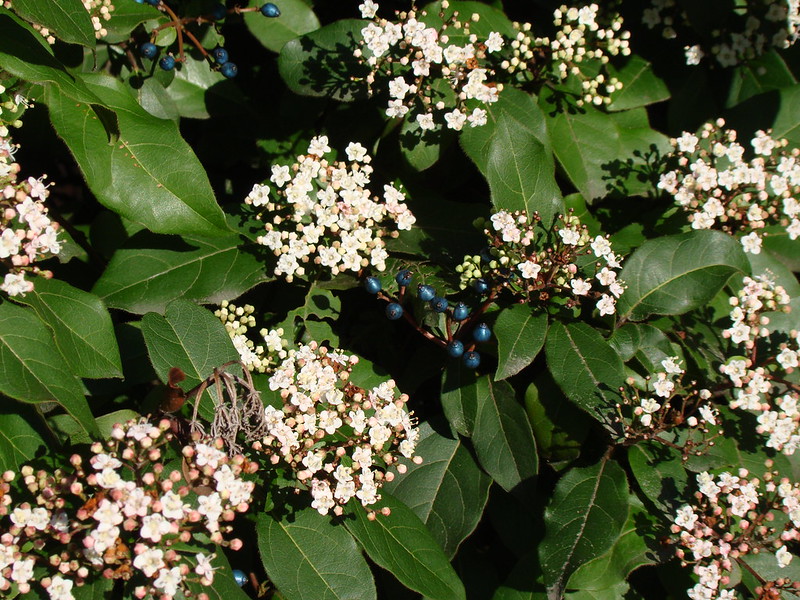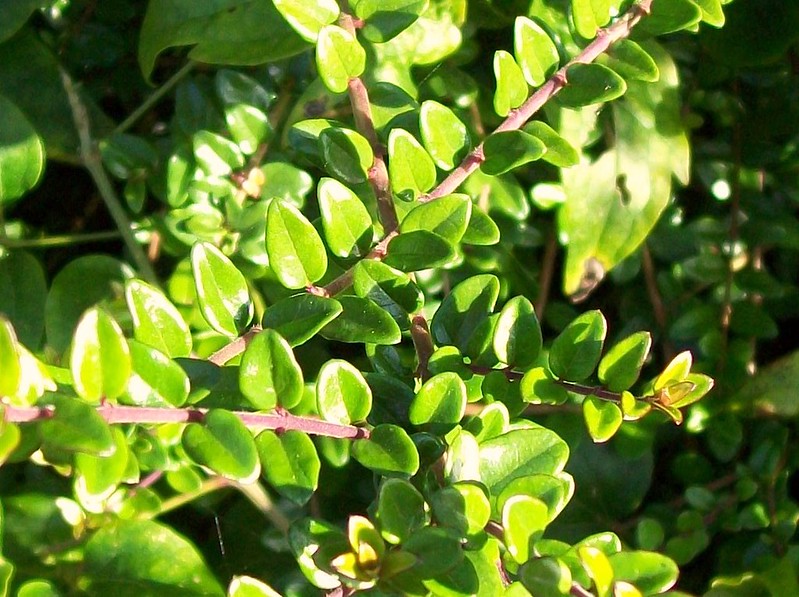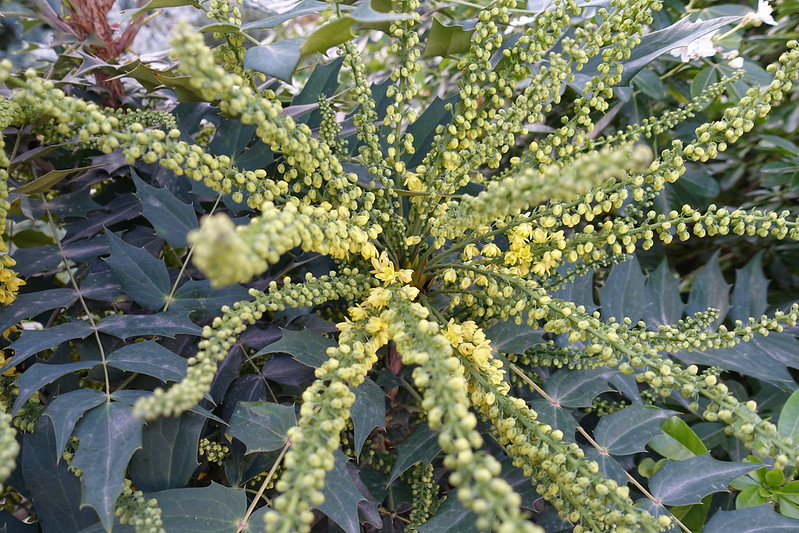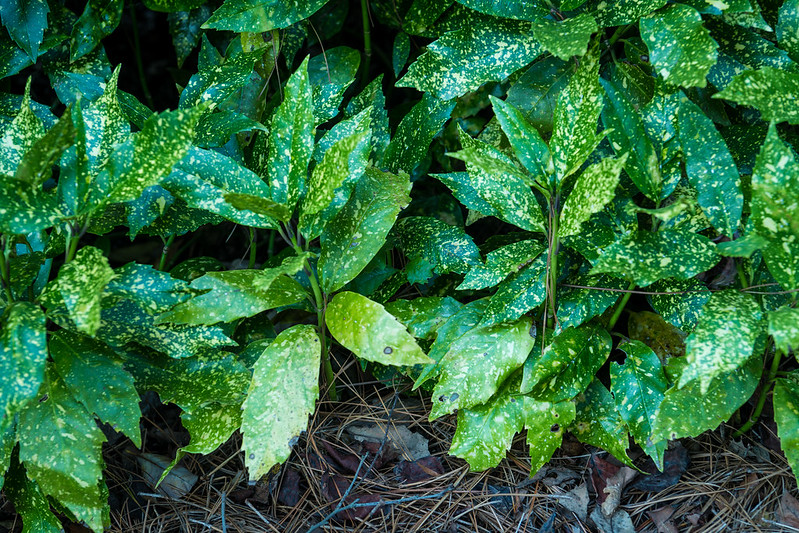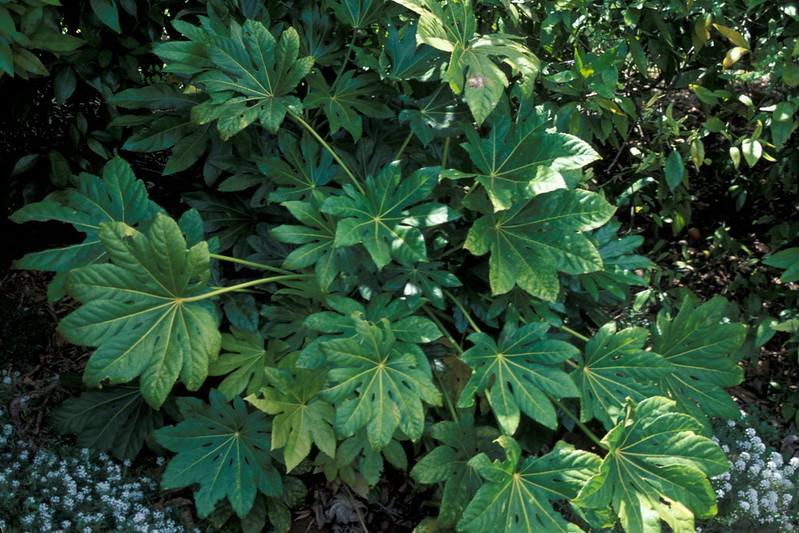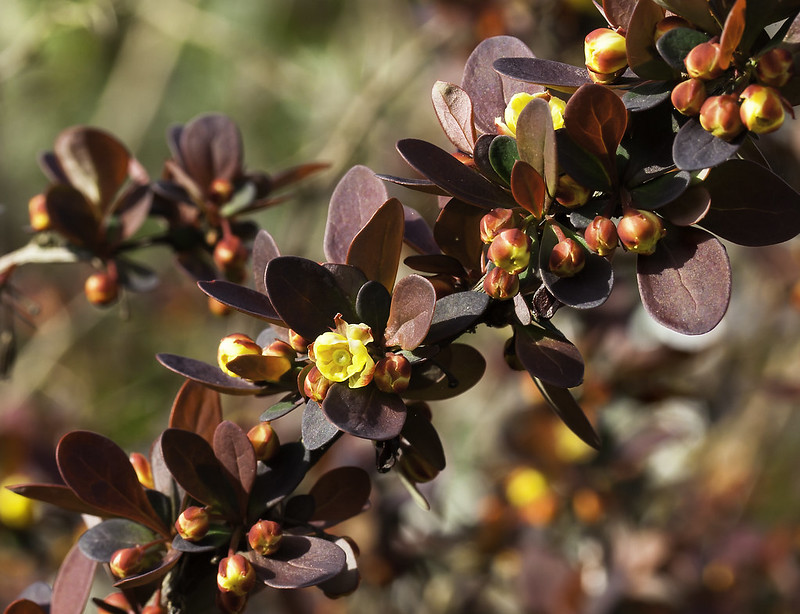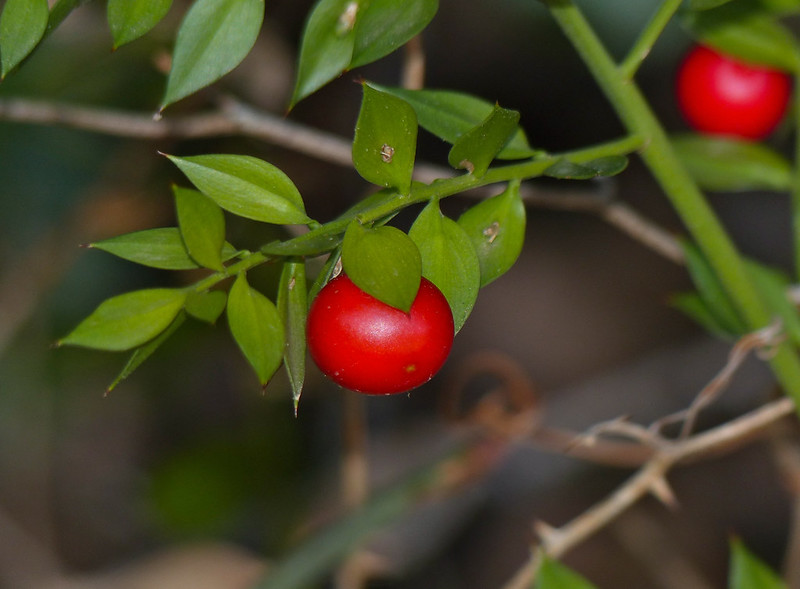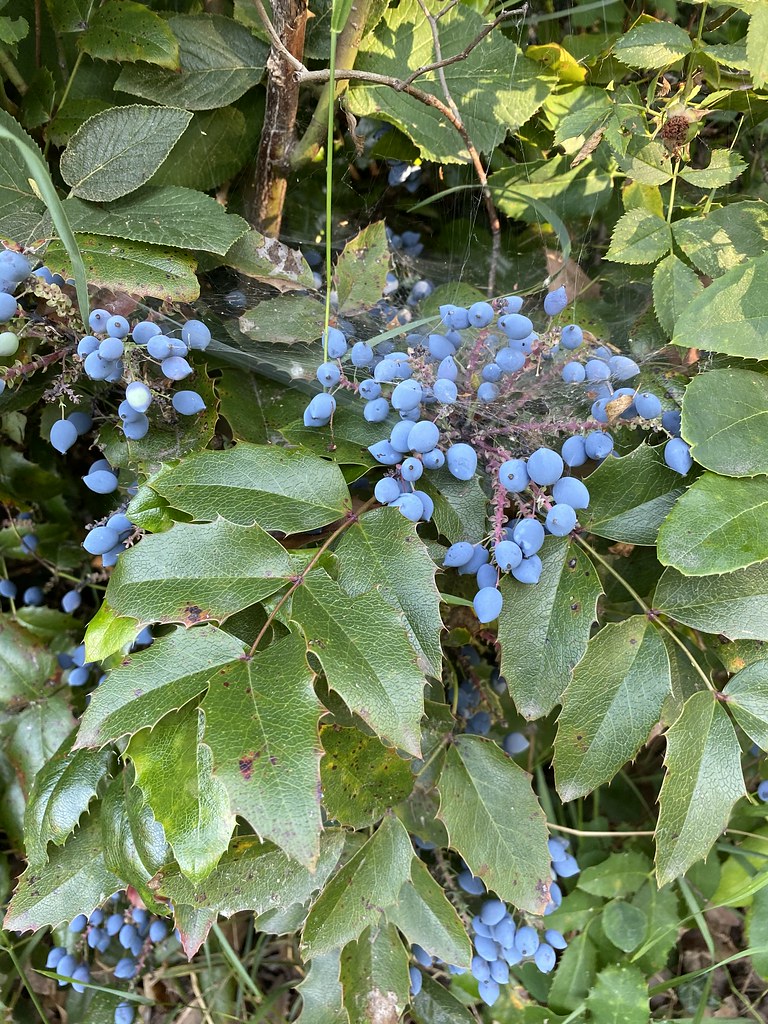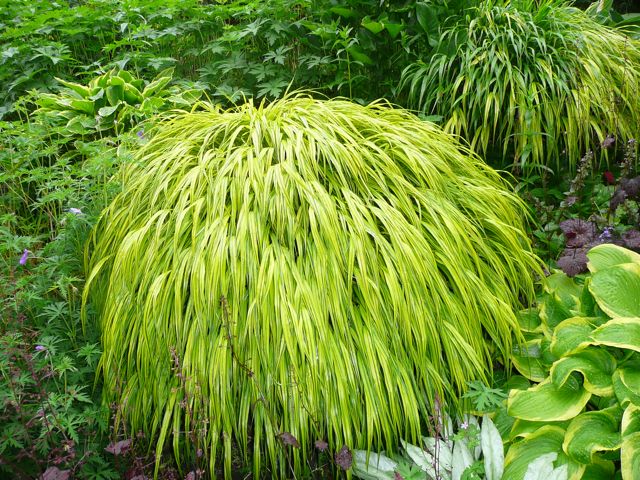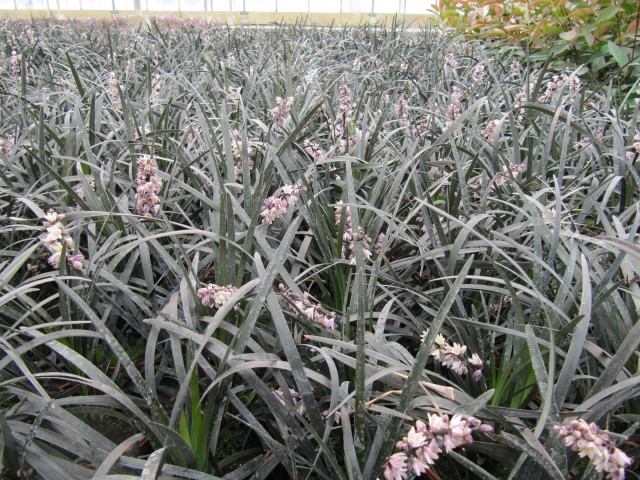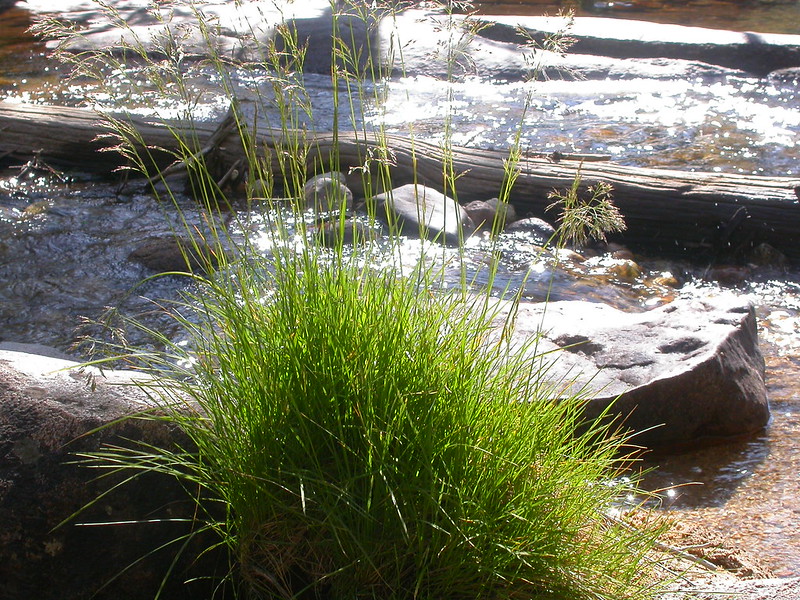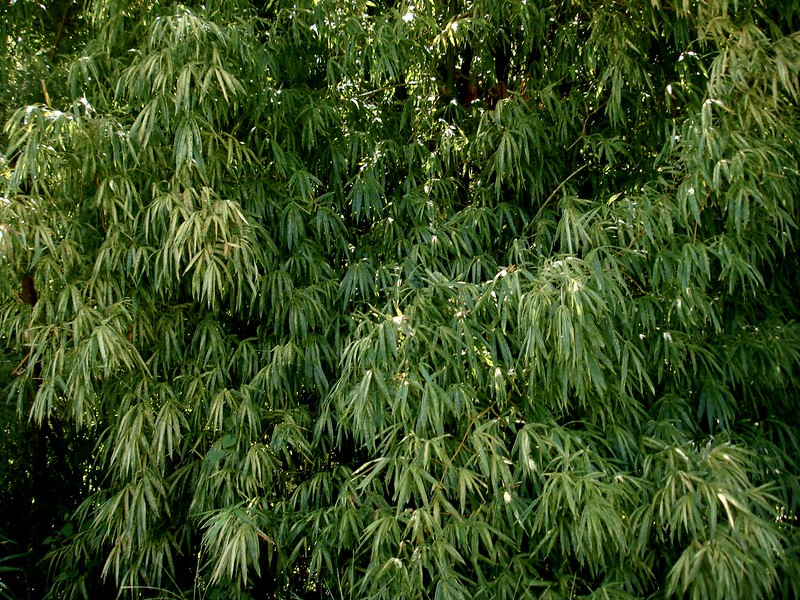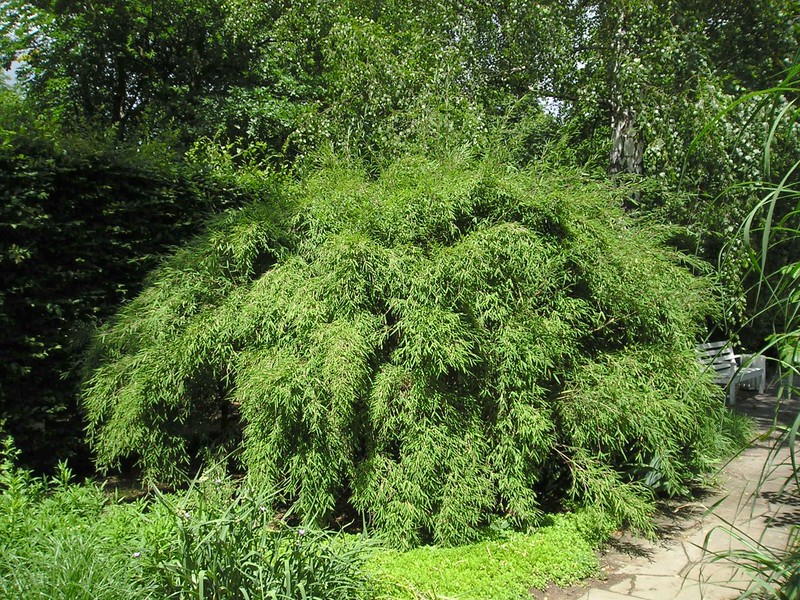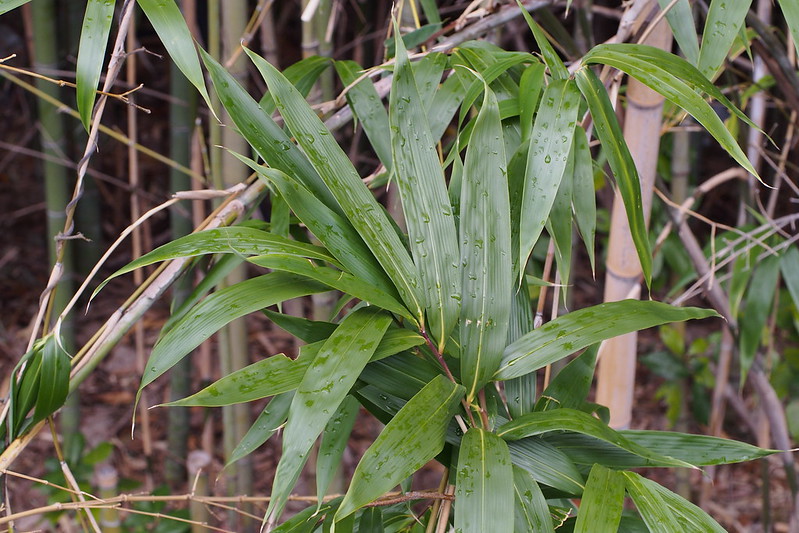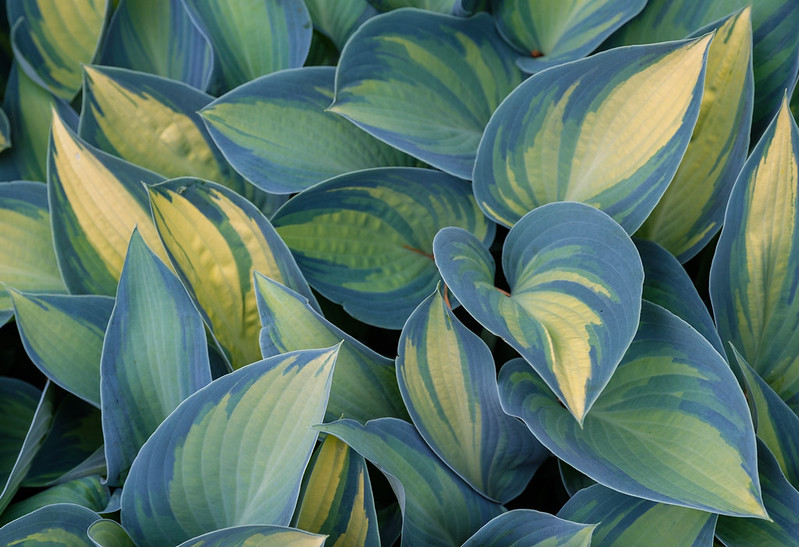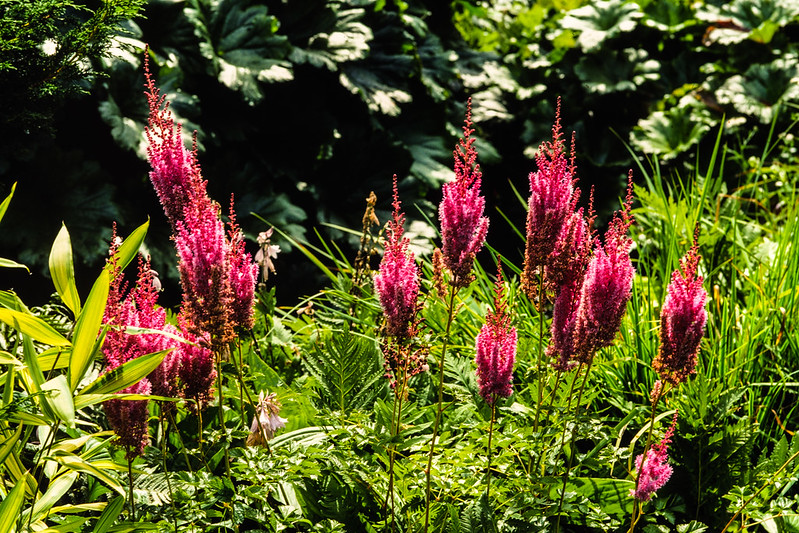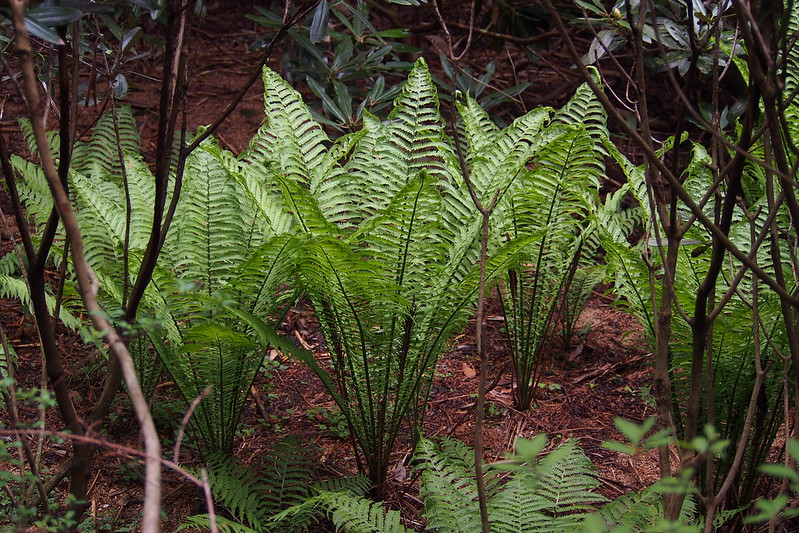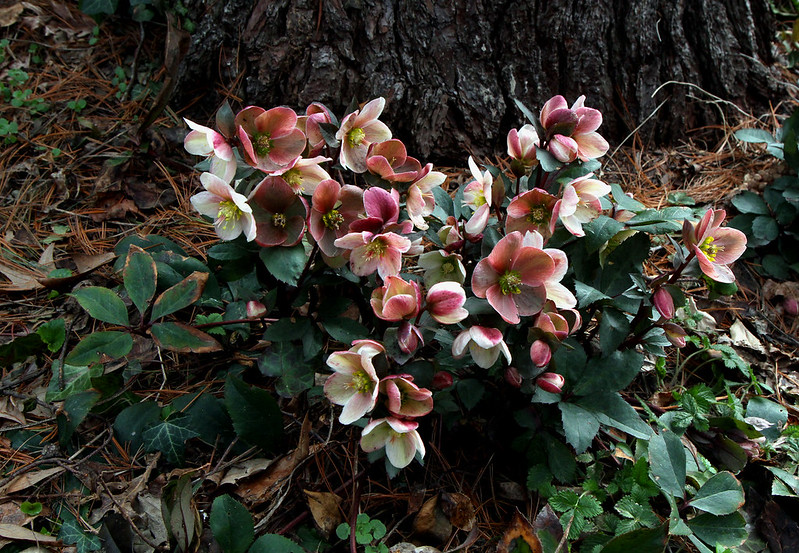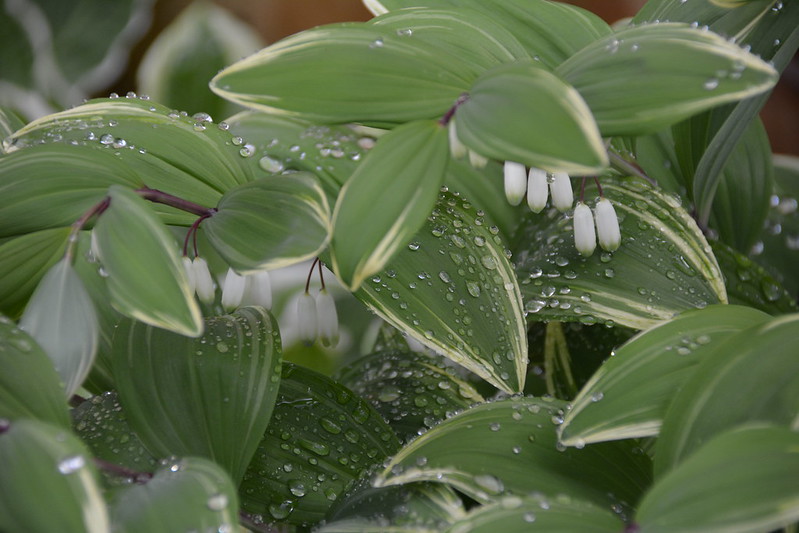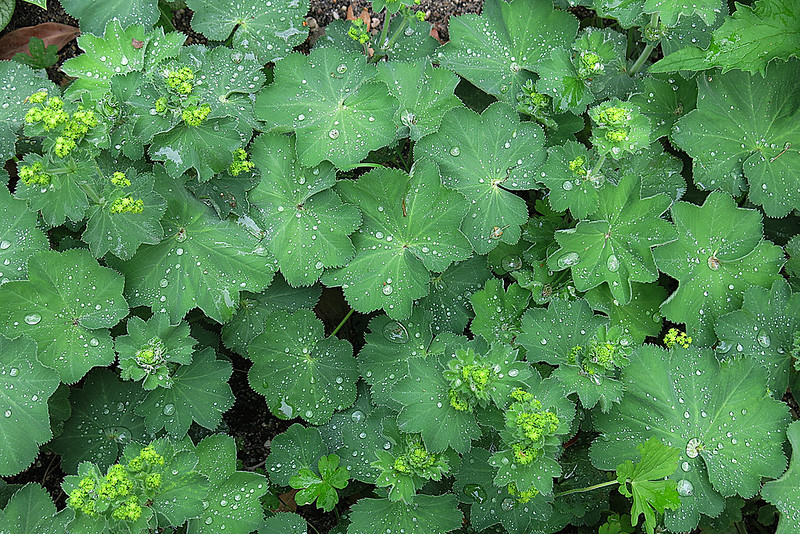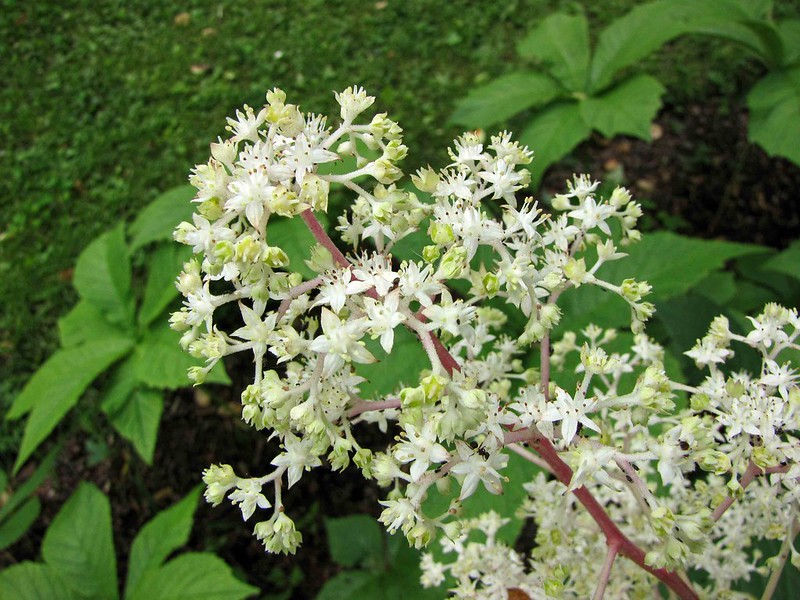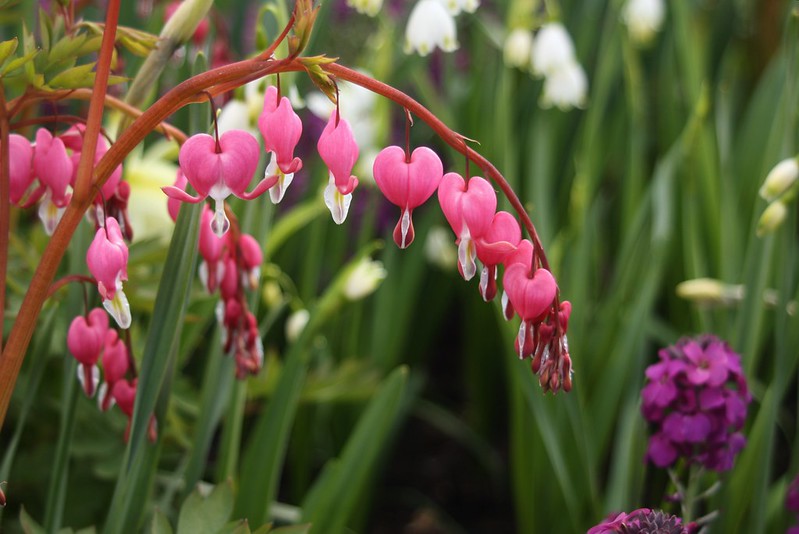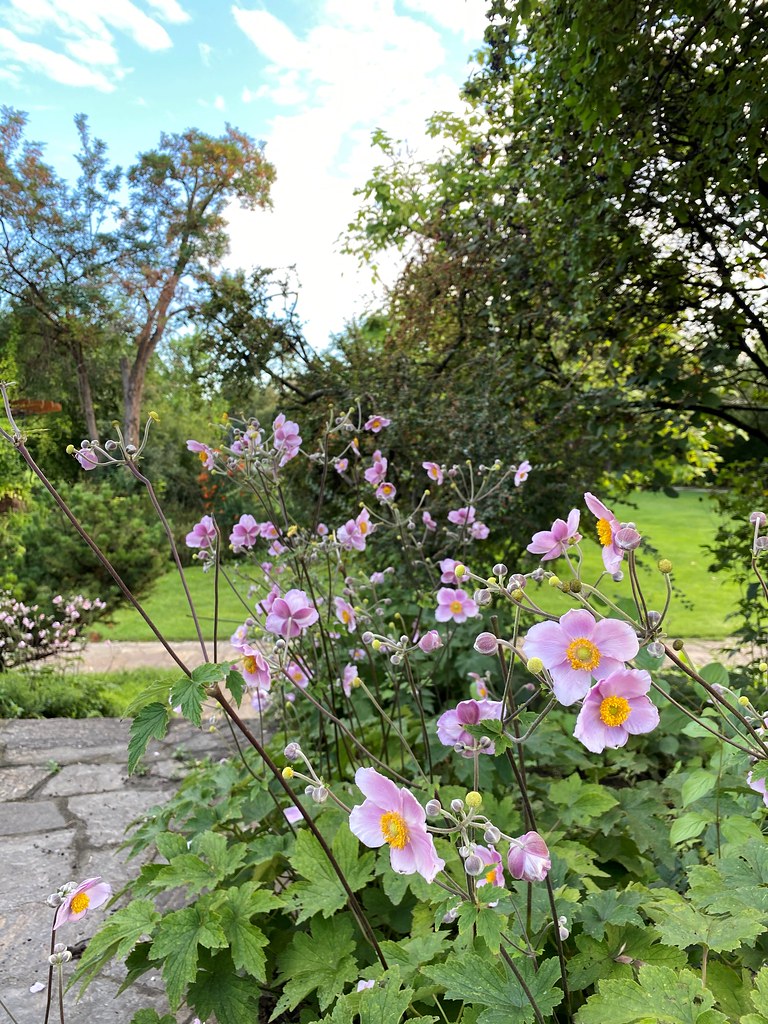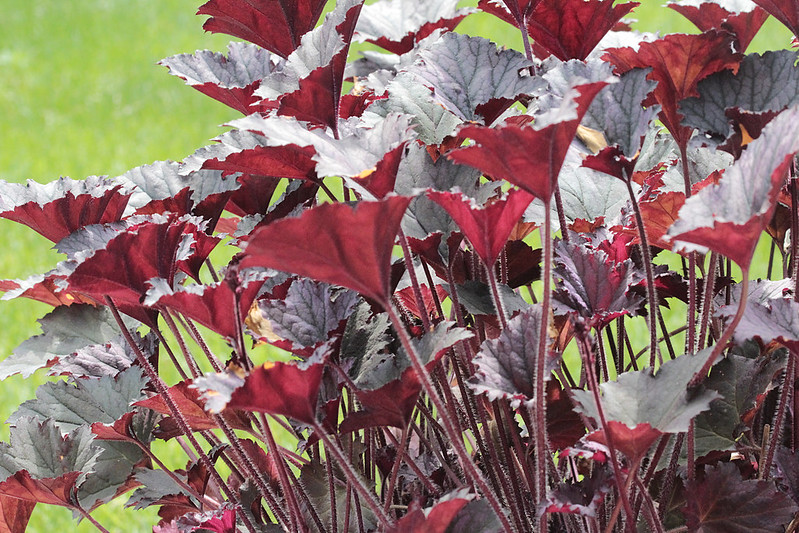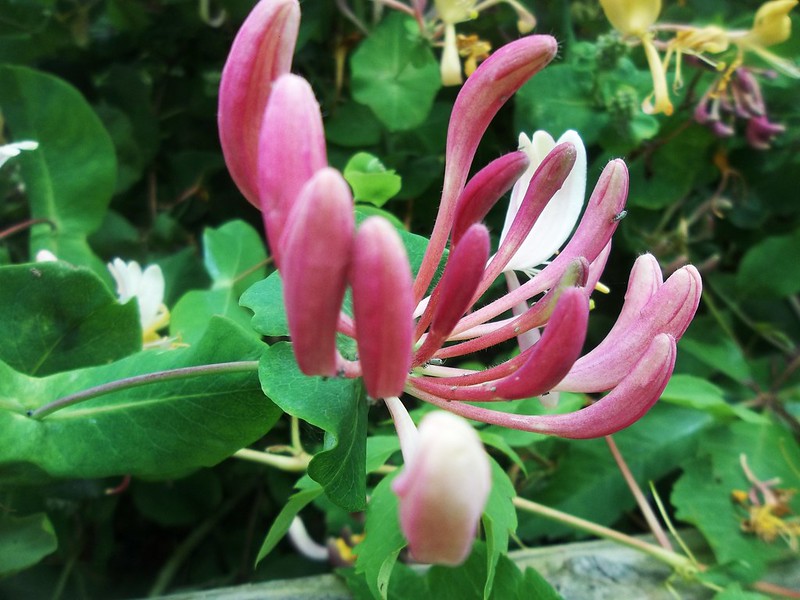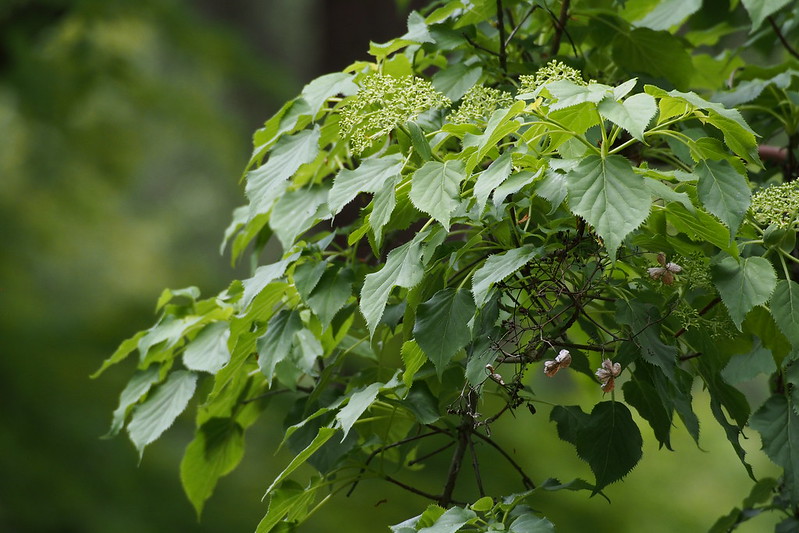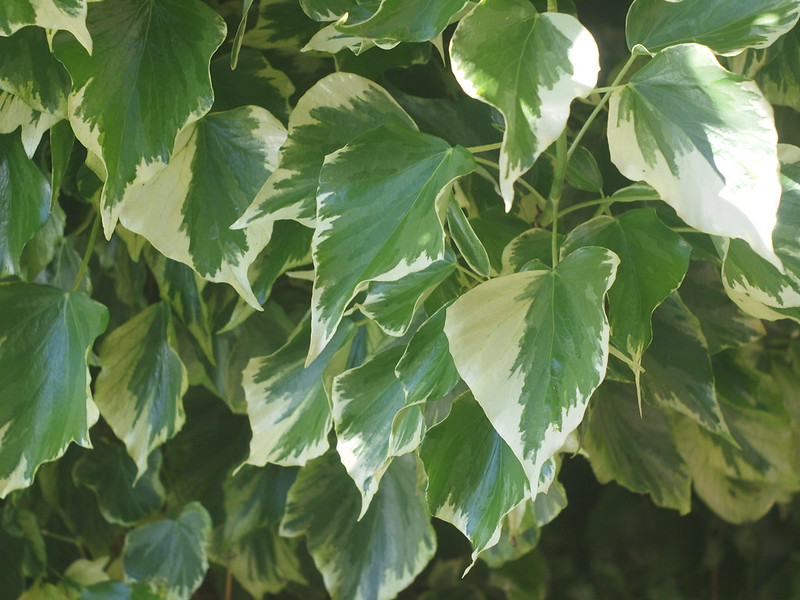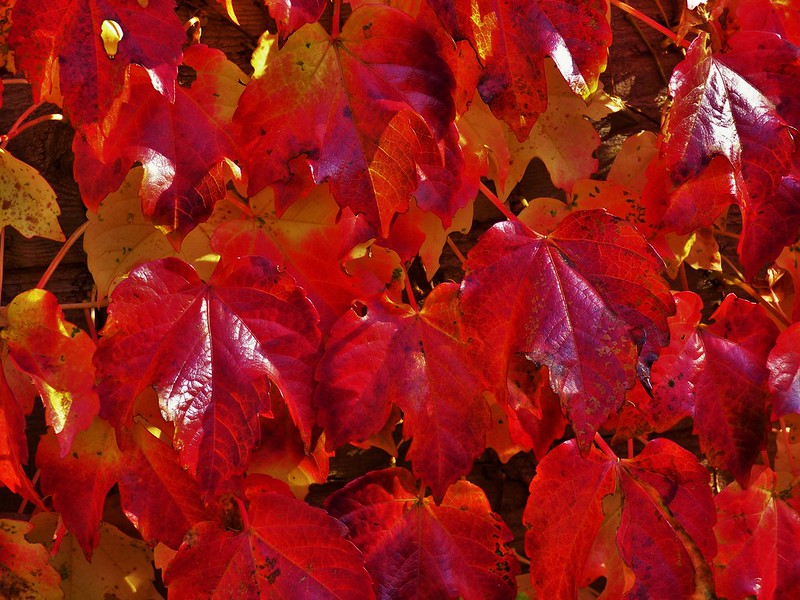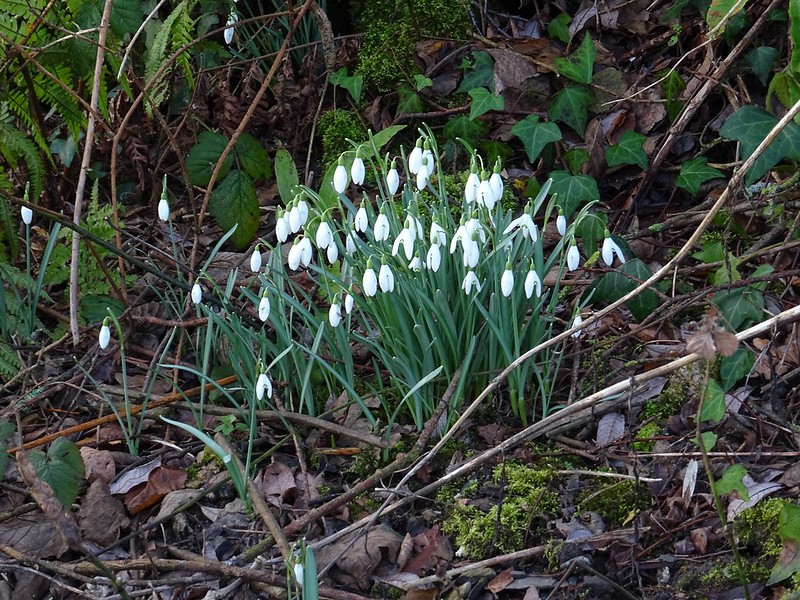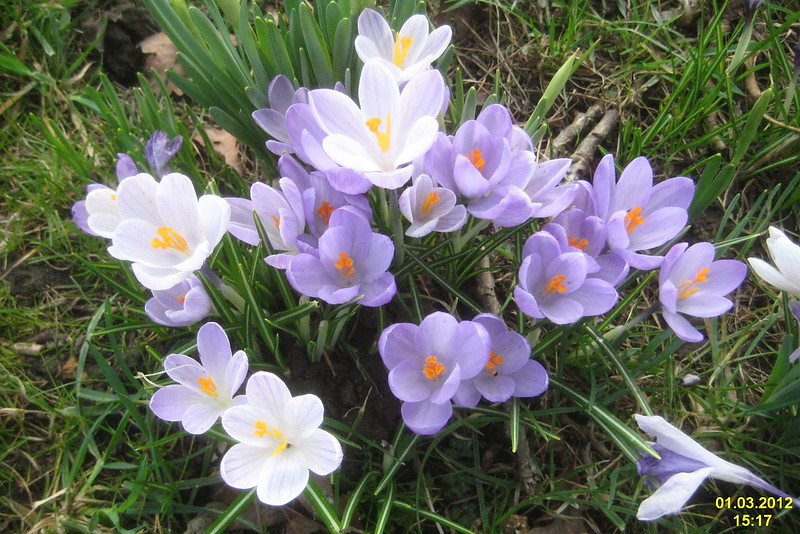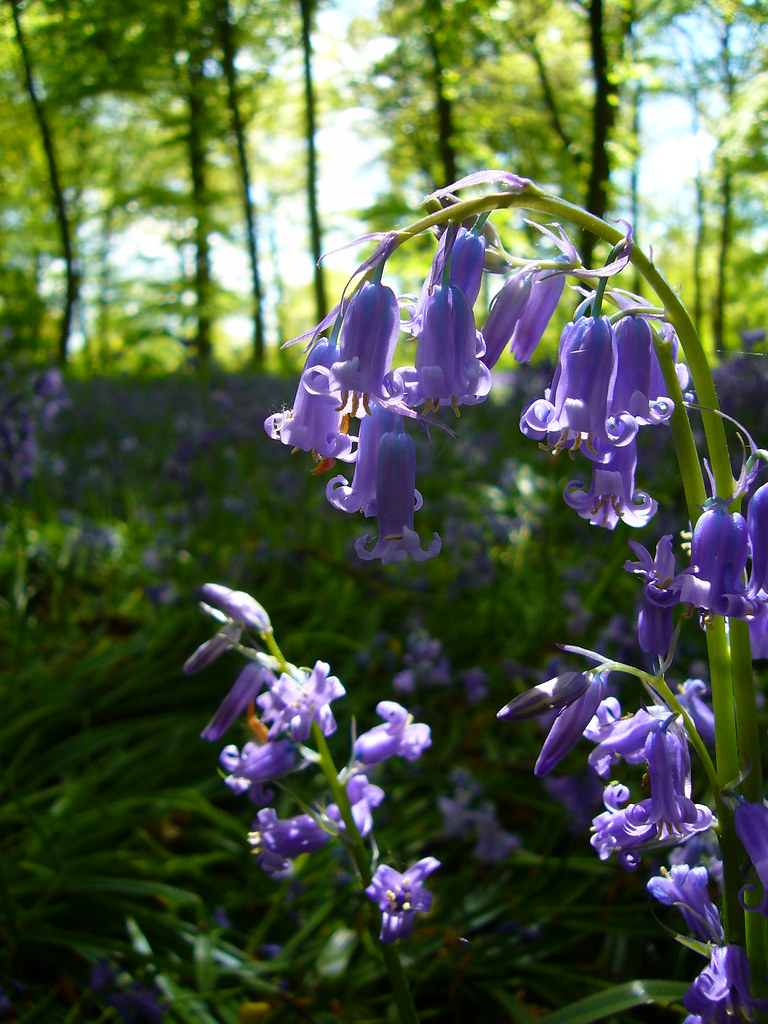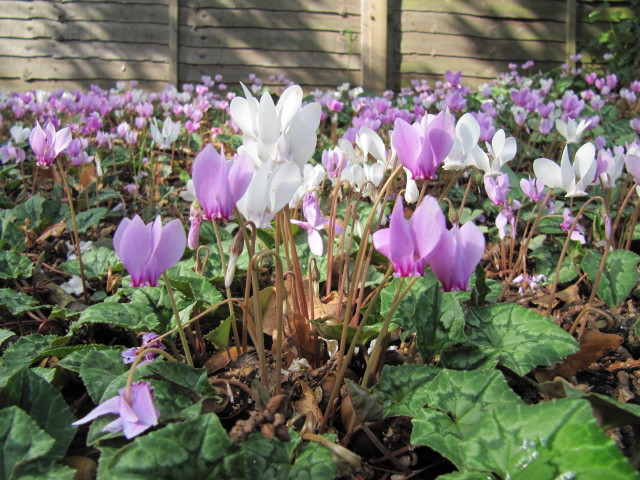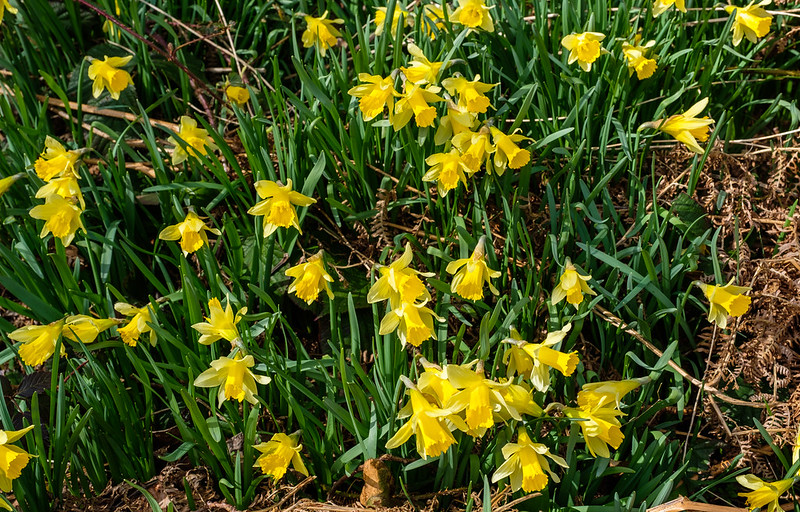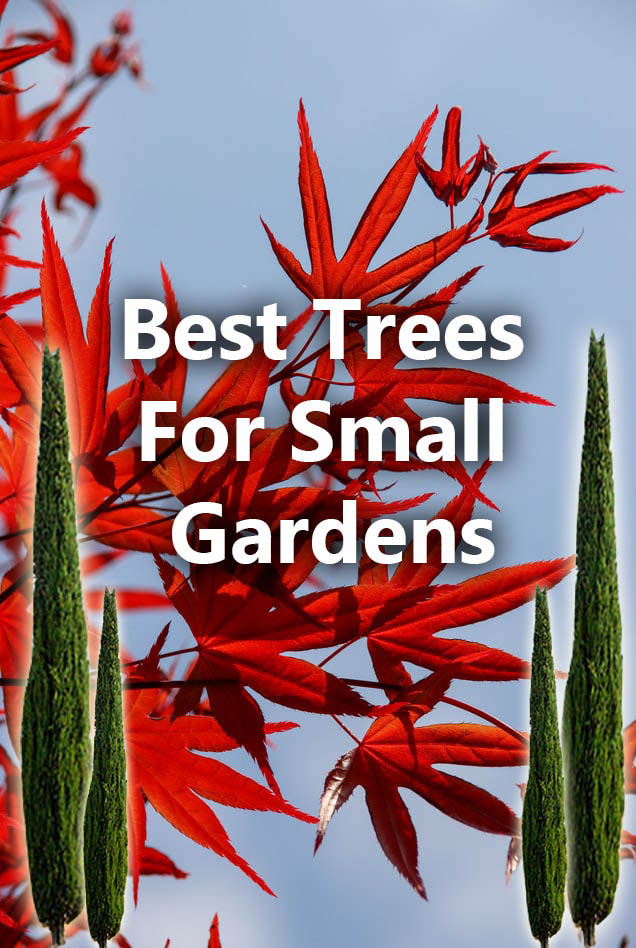|
This article contains affiliate links
Sometimes it feels like the only way to grow healthy plants in your garden is to have full sun. As sun is typically the means for plants to produce food via photosynthesis it is easy to see why full sun is favourable. However, just like in nature many plants have to live within the shadows of others and topographical features.
The truth is, there are very few gardens which have no shady conditions at all. Garden boundaries such as fences and buildings as well as trees commonly cast shadows and create dark areas. However this should not be a major problem as there are plenty of attractive plants that will thrive in shade. From small trees to shrubs, perennials and bulbs there are many types of plants which can favour these conditions. We have put together our top 42 garden plants for shady gardens here so you will never have a bare, dark spot in your garden again. TreesAmelanchier grandiflora
This very attractive, small tree is perfect for a shady spot or part shade border. It has green, oval foliage which turns vibrant colours in autumn with berries that birds love to eat. In spring it becomes covered in attractive white flowers which almost look clematis like. This plant is extremely hardy and tolerant of most growing conditions.
Ilex aquifolium argentea marginata
Originally bred from wild holly this tree is robust and very easy to become established. It will gladly tolerate shading gardens and its decorative, variegated foliage will brighten up dull areas. This silver lined holy is evergreen so it will look good all year. This is especially so in winter when it bares bright red berries. Its foliage can also be made into Christmas wreaths.
Acer palmatum
In its native ranges of Japan and central China 'Acer palmatum' is used to shading from mountains and taller trees. Japanese Acer is renowned for its decorative, 5 lobed, jagged leaves and impressive autumn colour. These come in a range of foliage colours and even though compact interprets the form of larger, majestic trees within the landscape. This bonsai effect makes them perfect garden focal points, especially in Japanese gardens.
Cornus kousa
Cornus Kousa or Chinese dogwood is a small tree or large shrub which grows to about 7 metres tall. In spring time it is covered with beautiful flowers which can turn branches white. The flowers are followed by small fruits which are actually edible, however these are typically enjoyed by local wildlife! This tree can tolerate shady conditions as well as moist ground.
Cephalotaxus harringtonia
Also known as the 'Japanese plum yew' this evergreen tree very much resembles the European Yew. Furthermore it is smaller and more compact than the European type with a conical, almost tubular form. This tree also has edible fruits which are quite delicious. In Japan these are actually grown for the fruit and reach around 4 meters tall.
Hamamelis mollis
Commonly known as witch-hazel this deciduous, small tree is a delight in shady gardens. In winter its spider like blooms releases an attractive aroma which carries easily on the breeze. Its small flowers vary in colour from red to orange and yellow. These trees originally come from the forests of China where they are often shaded by larger trees.
Magnolia soulangeana
Magnolias are characterised by their very large, fragrant flowers which bloom before the leaves appear in spring. This gives them a magnificent appearance early on in the season. Originally from China and the USA these small trees can put up with shade from buildings and larger trees.
Trachycarpus fortunei
Sometimes referred to as 'Chinese windmill palm' this hardy evergreen makes a tropical focal point in the garden. Not only is it remarkable it can grow well in temperate gardens it can also grow in shade. For best results in shade make sure it has a free draining soil and is not in an exposed location. It is the perfect accompaniment to a tropical garden or jungle border.
ShrubsHydrangea macrophylla
Hydrangeas are medium sized, flowering shrubs which are originally from Japan. They have large, flowering clusters of typically blue, pink and mauve. Once established these shrubs are extremely hardy and can thrive for many decades. These shrubs will put up with shade and like a moist but well drained soil.
Pieris japonica
These small, evergreen shrubs have glossy leaves and clusters of small bell like flowers. Originating from the forested valleys of Japan this shrub is used to growing in cool shady conditions. As well as looking great this makes them perfect for shady temperate garden borders. It prefers a loamy and free draining soil.
Daphne odora
Daphnes are small, compact shrubs which are favoured for their scented winter flowers and glossy foliage. Their flowers appear in clusters and have 4 distinctive petal lopes. Originally from China these little shrubs are very hardy and tolerant of most soil types. They do not like root disturbance so try to keep them in the same location. They usually live for around 10 years.
Skimmia japonica
Skimmia have become a favourite plant when dealing with difficult situations. Not only can they put up with shady conditions they have many positive, visual attributes. Their compact habit with dark green, glossy leaves make them perfect for dense drift planting. Seasonally they produce clusters of white foliage and deep red berries adding drama and interest to shady areas of the garden.
Sarcococca confusa
Sarcococca is a hardy, evergreen shrub native to south East Asia and the Himalayas. This shrub has aesthetic dark green, glossy leaves which almost make it look artificial. In winter scented white flowers appear which contrast with the darker foliage. This plant has become famous for its resilience not only growing well in shade but also dry shade under tree canopies.
Pachysandra terminalis
This slow growing evergreen perennial has glossy leaves and slowly spreads outwards to create a matt of vegetation. This plant is perfect for a low lying ground cover in shady parts of the garden. It produces vertical spikes of white flowers in summer and can reach a height of 250mm.
Viburnum tinus
Viburnum tinus is a medium sized, evergreen shrub which generally grows to around 5 metres in height. Even though it originates from the Mediterranean when established it is extremely hardy. During early summer it produces prolific clusters of white flowers. Towards the end of summer they form into small, metallic, blue coloured fruits.
Lonicera nitida
Sometimes referred to as the 'Box honeysuckle' this shrub is usually used as a low growing hedge or ground cover. It has very dense foliage of small leaves which makes it ideal for topiary and shaping. It has a very light green colour which can help to brighten up shady parts of the garden.
Mahonia oiwakensis subsp 'lomariifolia'
Originating from the mountains of China this palm like shrub is both exotic and hardy. Not only is it evergreen it has bright, yellow, flowering spikes in the middle of winter. It has the ability to also grow well in shade making it a ray of sunshine even in those dull spots of the garden.
Aucuba Japonica
Also known as the 'Japanese laurel', Aucuba with its large, glossy leaves and golden speckling make it look truly exotic. Surprisingly this shade tolerant evergreen shrub can brave the harshest of planting positions. During late summer it forms bright, red fruits which are a striking contrast to its foliage. These are extremely effective in shady tropical borders.
Fatsia Japonica
Fatsia Japonica has become a classic component of the landscape designers planting pallet. There are very few plants which give you so much bang for your buck in positive credentials. This tropical looking plant is hardy to -15 Celsius and can happily grow in a sheltered shady spot. This evergreen rarely needs trimming as it maintains an elegant palm form as it grows. for more tropical looking plants that are cold hardy check out our article of 50 tropical looking plants here.
Berberis thunbergii atropurpurea
This much loved small shrub is appreciated for its vibrant red foliage and non fussy nature. Also called the Barberry when flowering has finished to sets many small, attractive fruits. This shrub can put up with cool, shady borders as long as it is planted in well drained soil.
Ruscus aculeatus
Also known as ‘butchers broom’ this Eurasian native is a little rough around the edges having very sharp leaves! However this small shrub has many good points including being extremely hardy and shade tolerant. Growing only to a height of 75cm it makes a perfect low hedge or block planting shrub.
Mahonia aquifolium
Sometimes called the Oregon grape this evergreen shrub is from the North West coast of the USA. Naturally occurring in the great mountain forests of the Pacific Northwest it is used to shady conditions. This shrub has a tall vertical growing habit typically growing to around 2 metres. It has serrated purple, green foliage and yellow flowering spikes in late winter. It bears attractive, purple, grape like fruits in autumn which are enjoyed by local wildlife.
Grasses
Hakonechloa macra
This grass is from the mountain forests of Japan hence its nickname, Japanese Forest Grass. It has a lovely bushy, arching habit which makes it even shrub like in habit. It forms a circular clump and has now been bred into a wide variety of colours. Dark greens, yellows and even reds are available which makes it easy to lighten up them shady areas of the garden.
Ophiopogon planiscapus nigrescens
This small, compact grass is instantly recognisable from the fact it is completely black. This rather interesting grass forms small clumps which divide via rhizomes. It has a low growing habit reaching a height of 20cm and a spread of 30cm. This is an effective plant for shady gardens and can make a big impact if mass planted.
Deschampsia cespitosa
Typically referred to as 'Tufted Hair Grass' this very hardy grass is extremely widespread across continents. It has deep grooved, evergreen foliage which is accompanied by tall flowering stems during the summer. The flowering stems can reach up to 4 feet with attractive golden seed heads which dance on the breeze. This is an extremely resilient grass and can thrive in a number of challenging conditions.
Bamboos
Chimonobambusa Marmorea
This shade loving bamboo is originally from Japan. Also known as the 'Marbled bamboo' it has canes which have attractive shades of grey, orange and black. This bamboo grows to around 2.5metres tall and rarely spreads more than 3 metres. This grass is evergreen and with its small, feathery foliage is extremely good to look at, especially in the breeze.
Fargesia japonica
This bamboo is a particular favourite of mine as it has very thin and flexible canes. This makes it extremely soft and feathery and less vigorous that typical bamboos. Also known as Chinese Fountain Bamboo its vertical canes typically arch over at the top. These can reach a height of 4 metres in height but generally reach around 2.5 metres in restricted spaces. Fargesia is a hardy bamboo that looks amazing at whatever time of year.
Pseudosasa japonica
This forms dense thickets of attractive, thin, narrow, caned bamboo with dark green foliage. This evergreen bamboo is attractive but can be rather aggressive and spread to form large clumps. In smaller gardens it is best planted in confined planters or sunken boxes to reduce spread. If left to roam in good conditions it can grow over 6 metres in height. If kept under control it can thrive satisfactorily in shady conditions.
Perennials
Hosta
Hostas are a herbaceous perennial which grow from small rhizomes under the ground. They come in all shapes, variations and sizes but generally have large, oval foliage. Originally from Japan and East Asia they have a tropical look but can be extremely cold hardy. These are well known for their shade tolerance and like a free draining, loamy soil.
Astilbe
Originally a native of Asia and North America Astilbes are a range of rhizomatous flowering plants. These have an erect, plume of flowers typically in the colours pink and purple. These plants have a vertical habit generally reaching a height of 1.5 metres tall. Although these plants demand a rich, fertile soil they are very tolerant of shade.
Matteuccia struthiopteris
This perennial fern also known as Ostrich fern and fiddlehead fern is extremely widespread. Growing across most of Eurasia and North America it is extremely adaptable when it comes to growing conditions. This makes it a favourite especially in challenging gardens as it has very attractive, light green foliage. The leaves have been compared to the rear feathers of an ostrich. Some have also claimed that the new shoots in spring can be eaten like Asparagus.
Hellebore's
Hellebores are a group of perennials which originated from the woodlands of Europe and Asia. They emerge and flower during the winter making them popular with gardeners seeking seasonal interest. Sometimes called the winter rose these elegant plants have exceptional blooms with deep colours. These have a good tolerance of shade due to their history growing in wooded environments.
Solomon seal
Solomon seal is a rhizomatous perennial native to Eurasian forests. This perennial plant is well known for being able to tolerate shady conditions. It also has an ability to put up with dry areas making it extremely resilient. This plant has arching stems about 30cm above ground with hanging bell like white flowers.
Alchemilla mollis
Also known as Lady’s Mantle this small, herbaceous perennial is a native of southern Europe is commonly used as a ground cover. It has very beautiful, light green or yellow foliage with attractive clusters of yellow flowers. Being able to tolerate shady gardens it can lighten up dark and dingy areas.
Rodgersia pinnata
Native to China this striking looking perennial flowering plant has pinnate leaves and star shaped flowers. It is fond of moist growing conditions and can tolerate shady areas. This elegant plant can reach around 1.2 metres in height.
Lamprocapnos spectabilis
This plant originally from Siberia and Northern China is instantly recognisable by its heart shaped blooms. Conveniently also known as ‘bleeding heart’ this perennial is surprisingly hardy and able to thrive in shady areas. The plants maximum height and spread is around 1 metre.
Anemone x hybrid
The Japanese Anemone is a beautiful and vigorous plant producing wonderful flowers in late summer. This aesthetic Anemone grows up from a fibrous root which shoots up every growing season. It is very tolerant of shade, cold conditions and varying soil types. With flowers that appear to float above the dark green foliage it is perfect for any flower border.
Heuchera villosa
Native to the Eastern United States this clump forming semi evergreen perennial is great for a shady border. Typically this plant comes in two main foliage colours, Light green and dark purple. Their spreading habit makes them effective ground cover plants and is generally not fussy. They have tall flowering stems with small cluster like flowers which sway in the breeze.
Climbers
lonicera periclymenum
Typically recognised as the common Honeysuckle this climbing plant is a favourite among gardeners. Found growing as a woodland climber across Europe, Asia and North Africa it is very hardy. This climber has attractive, tubular flowers and a delicate growing habit.
Hydrangea petiolaris
This Hydrangea is similar to traditional Hydrangeas but has a climbing habit. It is a favourite of gardeners who typically train it along fences and buildings. It has superb white flowers which cover the whole plant.
Hedera colchica
Also known as Persian Ivy this large leaved ivy is both robust and attractive. Originally from the Middle East this evergreen climber can also be grown as a ground cover. Although attractive these climbers can become very large and invasive so caution should be taken.
Parthenocissus tricuspidata 'veitchii
This deciduous climbing vine is well known for its exceptional bright red eaves in autumn. The climber also known as Boston Ivy can grow up to 30 metres and is extremely robust. The creeper holds on to structures using small discs attached to tendrils. This plant is very tolerant of difficult conditions including shade.
Bulbs
Galanthus nivalis
Most commonly known as the 'Snow drop' these delightful little clump forming bulbs are the first to flower in spring. These traditionally flower in the month of February creating carpets of cream, white across the landscape.
Crocus tommasinianus
Native to South East Europe these beautiful bulbs have large purple petals and bright yellow stamens. These bulbs are particularity attractive and very tolerant of shady conditions.
Hyacinthoides non-scripta
More traditionally known as the English Bluebell these bulbs are very common in British woodlands. They have long, narrow, flat leaves and vertical stems with rows of blue hanging bell like flowers.
Cyclamen hederifolium
Cyclamen are small, tuberous plants which originate from Europe and the Middle East. They are famous for their striking leaf patterning and colourful flowers. Flowers are extremely decorative and usually white or pink.
Narcissus pseudonarcissus
The common daffodil is extremely well known and is the classic sign that spring has begun. Daffodils are highly valued in our flower borders and lawns. Usually growing to 35 cm these bulbs have large attractive, bell shaped yellow flowers.
For more information and plants for gardening in the shade we recommend Alan Titchmarsh's Gardening in the Shade.
If you are planning on re-landscaping .your garden yourself why not check out our useful resource page. You may also find our best landscaping tools for particular garden projects article useful too.
If you need assistance in designing, building or planting a shady garden please do not hesitate to contact us. We traditionally serve the Chiltern Hills area as well as Oxfordshire, Hertfordshire and West London.
Some of our typical, local project locations include; Amersham, Aylesbury, Beaconsfield, Berkhamsted, Chalfont, Chesham, Gerard's Cross, Great Missenden, High Wycombe, Princes Risborough and Wendover.
0 Comments
Leave a Reply. |
The Author
|
Landscaping services across Buckinghamshire, Amersham, Aylesbury & High Wycombe
Hyde Heath, Amersham, Buckinghamshire |
|

